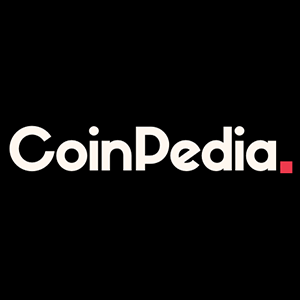Summary TeraWulf is a Bitcoin mining company with a 'no-HODL' treasury strategy that uses nuclear power for electricity. Q2 results show $35.6 million revenue, $21.7 million gross profit, and $10.9 million net loss. Professional asset managers like Stanley Druckenmiller are showing interest in TeraWulf, but valuation and seasonality risks should be considered. It's been a few months since my last piece covering TeraWulf ( WULF ) for Seeking Alpha. TeraWulf is a Bitcoin ( BTC-USD ) mining company with a slightly different approach than most peers; it's one of just a few miners that maintain a 'no-HODL' treasury strategy and I believe it's the only one utilizing nuclear power for a portion of its electricity source. This is a name that I've been in and out of a handful of times personally. To briefly summarize my thinking on WULF, here's an excerpt from the closing section of my previous article: Given the combination of efficiency and EH/s, I still think WULF is a buyout target at the right price. However, at current valuation levels, we may need to see WULF shares back under $2 before a peer with enough capital to do a deal would be interested. We currently find a stock price more than double that $2 per share figure I laid out in May. WULF Daily Chart (TrendSpider) Frankly, I've missed out on the larger part of this run since mid-June. In this update, we'll look at the company's Q2 results, interesting developments in hedge fund holdings, and risks to consider before longing the stock. Q2 Results Data by YCharts In the second quarter 2024, TeraWulf reported $35.6 million in revenue versus $13.9 million in cost of revenue for a gross profit of $21.7 million in the quarter. $ in millions Q2-23 Q1-24 Q2-24 YoY QoQ Revenue $15.5 $42.4 $35.6 129.7% -16.0% COGS $5.1 $14.4 $13.9 172.5% -3.5% Gross Profit $10.3 $28.0 $21.7 110.7% -22.5% Source: TeraWulf, Author's calculations When we look at the raw figures in the table above, we can see the "halving" impact reflected quite clearly. From both year over year and sequential standpoints, the margin is deteriorating. From Q2-23 to Q2-24, COGS rose faster than revenue. Furthermore, COGS fell slower than revenue sequentially from last quarter. Again, this shows the clear issue with mining Bitcoin as a long-term business. Data by YCharts From my vantage, TeraWulf has done an admirable job of keeping SG&A expense growth down relative to COGS - year over year SG&A rose 40.2% from $9.7 million to $13.6 million. Still, TeraWulf reported negative net income of $10.9 million in the quarter. Unlike other mining peers who have Bitcoin 'HODL' approaches to corporate treasury, there is no meaningful BTC stack that is revalued quarter to quarter due to FASB accounting rules. Data by YCharts At the end of June, TeraWulf had $104.1 million in cash and equivalents. This was due to a 15% increase in shares outstanding after the company tapped its ATM following the impressive price rune in the stock. Subsequent to the quarter ended June, TeraWulf paid down its remaining debt outstanding in a $77.5 million final payment. Per the conference call, the company is now holding $28.4 million in cash and Bitcoin following that large debt payment. August Investor Deck, Slide 4 (TeraWulf) The company is still guiding for considerable growth in EH/s over the next year even with HPC/AI services seemingly becoming a more important focus for the company longer term. Druckenmiller Is In Earnings and capacity growth plans aside, for me, the most interesting new development for WULF shareholders since I last covered the stock is the company appears to be quickly becoming a favorite with professional asset managers. According to data from Whale Wisdom, WULF is now owned by 198 total funds. That's double what fund holders were this time last year and nearly 4x the level from Q4-22: WULF (Whale Wisdom) The one that really stands out to me is Duquesne Family Office. This is the fund run by legendary money manager Stanley Druckenmiller. In the company's latest filings , Duquesne significantly trimmed Microsoft ( MSFT ) and Apple ( AAPL ) but bought a new 2.1 million share position in WULF. It's admittedly a very small position for Druck's fund at just 0.3% of AUM, but given the firm's track record, I think it's an interesting piece of information. Duquesne Family Office QoQ Performance (Whale Wisdom) At 39.8%, Duquesne has outperformed the S&P 500 over the last four quarters and as far as I can tell, WULF is the only Bitcoin mining stock that the company currently has exposure to. Duquesne NVDA Transactions (Stockcircle) Previously, Duquesne played NVIDIA ( NVDA ) borderline perfectly after amassing 10 million shares at an average buy price of under $20 per share post-split and selling most of the position several times higher than cost basis. The point is, Duquesne is a fund that I think investors should be paying attention to and the recent interest in WULF is quite intriguing. However, that doesn't mean one needs to indiscriminately buy the stock at these levels. Risks: Valuation & Seasonality In May, WULF was trading at a little over 3x book value, which even then was ahead of most peers. In the chart below, I've added forward price to sales and two different mining peers for a valuation comparison. Marathon Digital ( MARA ) is the largest miner by both EH/s and by HODL stack. And Iris Energy ( IREN ) is a really strong comp because it shares TeraWulf's no-HODL approach, has a similar market cap, and mined almost the same amount of BTC in July as TeraWulf. Data by YCharts In each metric, WULF trades at significant premiums to both of these peers. At 12x forward sales, WULF trades at more than a 5x premium to IREN - which as I noted is a similar company by several key metrics. And at a P/B ratio of just under 5, IREN commands a book valuation more than double industry average. WULF Seasonality (TrendSpider) It's perhaps a sample size that is too small given TeraWulf only has two Septembers of trading post-IKONICS Corporation combination in late 2021, but in its current form WULF has never had a positive return in the month of September. In fact, September is historically WULF's worst month of the year, with a mean change of -27.6%. This aligns with general seasonality weakness in the broader equity market. It certainly doesn't mean the same has to happen again, but given the recent runup in the stock price, I think it's wise to be mindful of possible seasonal weakness over the next couple of months. Closing Thoughts WULF is certainly still a name that I'm interested in. I will reiterate that I think Bitcoin mining is a flawed business longer term, but there could ultimately be investable opportunities if a few of these companies can grow HPC segments. Stanley Druckenmiller's team seems to like what they see in TeraWulf and that does actually matter to me. Especially considering Druck's recent performance with NVDA. This is purely speculative on my part, but I suspect Duquesne is looking for AI opportunities beyond chipmakers, and WULF seems to be one that has interested the fund. I still have some concerns about valuation and broad market seasonality that, I think, will weight on the stock from here temporarily. I'm going to keep it a "hold" for now, but it's very much on watch.












